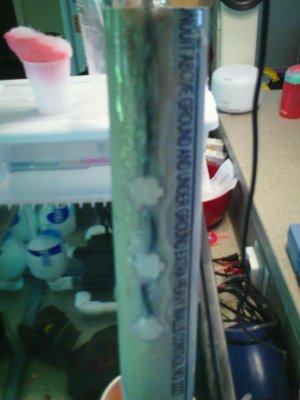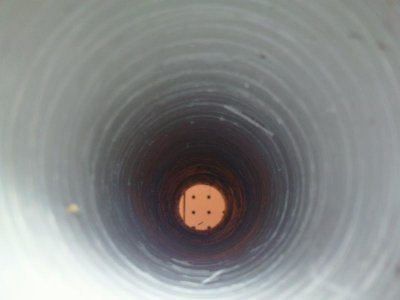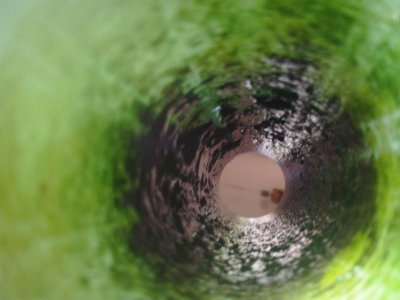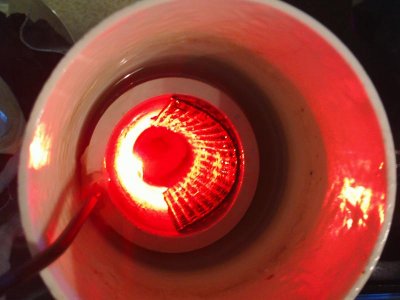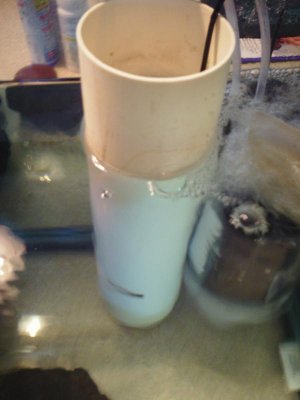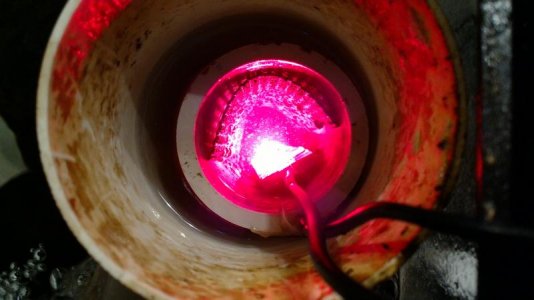SantaMonica
Well-known member
Using Seaweed to get rid of nuisance algae in your aquarium or pond, part 4
Let's start building our filter with the understanding of what the algae need to pull nutrients out of the water quickly: Light x Attachment x Turbulence. The light is obvious, and the attachment keeps the algae in place so the turbulence can occur without washing away the algae. The turbulence is the part mostly people don't understand, because they see algae in their tank without much turbulence. What they don't see is the rate of nutrient absorption; it would be very slow without turbulence, sort of like you standing in front of the oven and not letting other people get their turn to warm up.
Lighting is the simple one: Photosynthesis likes red and blue color light. It absorbs red and blue, and uses it, but it does not use much green. So green is reflected back to you, and that's why lots of plants and algae look green. And for algae, it turns out that mostly red is needed. Matter of fact you can use only red if you want to. 660 nm (nanometers) in particular, which is called "deep red". 630 nm works too. And you can add a little blue, such as 430 nm if you want, but the red does most of the work. "Plant grow" lights can be bought which already have these colors.
Three main types of attachment material exist: Rocks, strings and screens. Algae have developed a natural enzyme to allow them to bore into solid rock and attach to it, so if you use rock (live rock, or silica rock, for example), then the algae already know what to do. Strings, and screens, which are "new and unfamiliar material" to algae, work by offering the algae places to wrap around and attach back to themself. So while algae may not dissolve holes into nylon string or plastic screen, an algal strand can do a wrap-around and attach back to itself. Once it does this, it's as solid of a grip as with rock.
Turbulence, as in a thin air/water turbulent layer, is the area where all the work goes into when building, and decisions have to be made how and where you are going to be filtering. You want a lot of turbulent "turnover" touching the algae so that new nutrients are brought to the algae each instant, and you want a very thin layer of water separating the algae from the air, so that what's called the "boundary layer" of water surrounding the algae will be very thin, thus allowing CO2 and nutrients to get in and out of the algae easily. It's like giving everyone a turn to stand in front of the oven to get warm.
There are three basic ways to provide this air/water turbulence: Rivers, waterfalls, and upflows. A fast flowing river does provide fast water, but the air/water layer is rather thick because the river can get deep easy. More than about a centimeter deep will almost halt any rapid algae growth. Also, light can only reach the growth from the top, so rivers are essentially only 1-sided, which means that the bottom of the river, under the most growth, gets dark easily and can die; this stops your filtering. Therefore since rivers are less efficient, they need to be bigger to give an acceptable amount of filtering.
Waterfalls solve both of the problems of rivers: The air/water layer stays thin, usually 5 mm, and if the waterfall is flowing down a thin screen with a light on both sides, then the waterfall is 2-sided instead of 1-sided. This light on both sides keeps the "roots" of the algae alive longer, so it holds on longer, thus letting it grow and filter more. Waterfalls must be above the water however, so they take a lot of space. And if the water stops, the growth dries out.
Upflows, using air bubbles under water, improves upon the air/water turbulent interface of waterfalls because when air bubbles rub the algae, essentially the thickness of the water at that spot is zero for a brief instant. Plus there is an in-and-out swishing of the algae as the bubbles go by. This motion provides the thinnest boundary layer around the algae, and thus offers the least resistance to nutrient and CO2 flow into the algae. Also, upflow cannot dry out, because even if all bubbles stop, the algae just stay under water. And of course, being already under water, they essentially take up no extra space.
So next time we will start making some things.
Let's start building our filter with the understanding of what the algae need to pull nutrients out of the water quickly: Light x Attachment x Turbulence. The light is obvious, and the attachment keeps the algae in place so the turbulence can occur without washing away the algae. The turbulence is the part mostly people don't understand, because they see algae in their tank without much turbulence. What they don't see is the rate of nutrient absorption; it would be very slow without turbulence, sort of like you standing in front of the oven and not letting other people get their turn to warm up.
Lighting is the simple one: Photosynthesis likes red and blue color light. It absorbs red and blue, and uses it, but it does not use much green. So green is reflected back to you, and that's why lots of plants and algae look green. And for algae, it turns out that mostly red is needed. Matter of fact you can use only red if you want to. 660 nm (nanometers) in particular, which is called "deep red". 630 nm works too. And you can add a little blue, such as 430 nm if you want, but the red does most of the work. "Plant grow" lights can be bought which already have these colors.
Three main types of attachment material exist: Rocks, strings and screens. Algae have developed a natural enzyme to allow them to bore into solid rock and attach to it, so if you use rock (live rock, or silica rock, for example), then the algae already know what to do. Strings, and screens, which are "new and unfamiliar material" to algae, work by offering the algae places to wrap around and attach back to themself. So while algae may not dissolve holes into nylon string or plastic screen, an algal strand can do a wrap-around and attach back to itself. Once it does this, it's as solid of a grip as with rock.
Turbulence, as in a thin air/water turbulent layer, is the area where all the work goes into when building, and decisions have to be made how and where you are going to be filtering. You want a lot of turbulent "turnover" touching the algae so that new nutrients are brought to the algae each instant, and you want a very thin layer of water separating the algae from the air, so that what's called the "boundary layer" of water surrounding the algae will be very thin, thus allowing CO2 and nutrients to get in and out of the algae easily. It's like giving everyone a turn to stand in front of the oven to get warm.
There are three basic ways to provide this air/water turbulence: Rivers, waterfalls, and upflows. A fast flowing river does provide fast water, but the air/water layer is rather thick because the river can get deep easy. More than about a centimeter deep will almost halt any rapid algae growth. Also, light can only reach the growth from the top, so rivers are essentially only 1-sided, which means that the bottom of the river, under the most growth, gets dark easily and can die; this stops your filtering. Therefore since rivers are less efficient, they need to be bigger to give an acceptable amount of filtering.
Waterfalls solve both of the problems of rivers: The air/water layer stays thin, usually 5 mm, and if the waterfall is flowing down a thin screen with a light on both sides, then the waterfall is 2-sided instead of 1-sided. This light on both sides keeps the "roots" of the algae alive longer, so it holds on longer, thus letting it grow and filter more. Waterfalls must be above the water however, so they take a lot of space. And if the water stops, the growth dries out.
Upflows, using air bubbles under water, improves upon the air/water turbulent interface of waterfalls because when air bubbles rub the algae, essentially the thickness of the water at that spot is zero for a brief instant. Plus there is an in-and-out swishing of the algae as the bubbles go by. This motion provides the thinnest boundary layer around the algae, and thus offers the least resistance to nutrient and CO2 flow into the algae. Also, upflow cannot dry out, because even if all bubbles stop, the algae just stay under water. And of course, being already under water, they essentially take up no extra space.
So next time we will start making some things.

